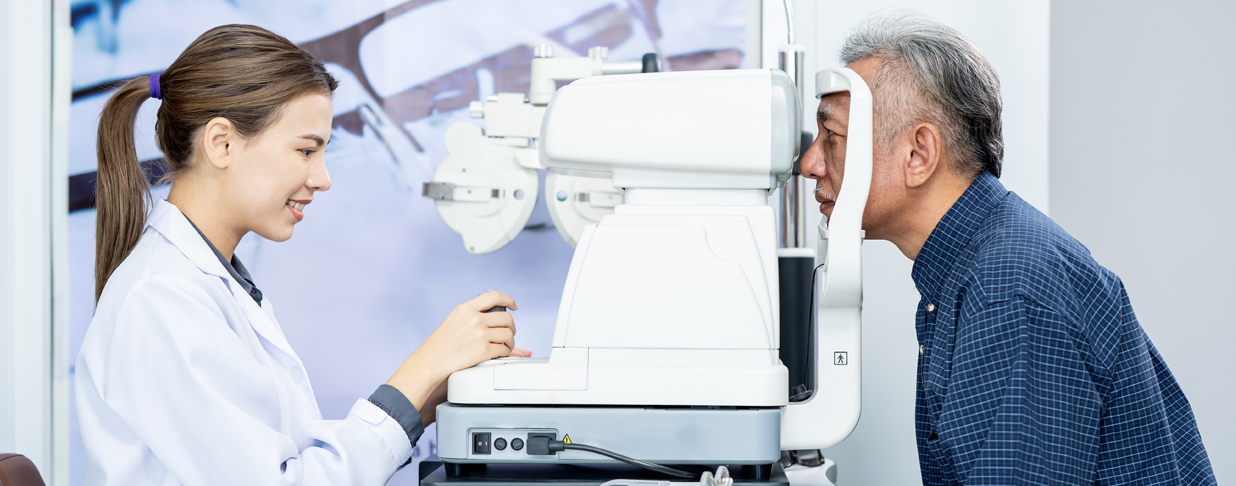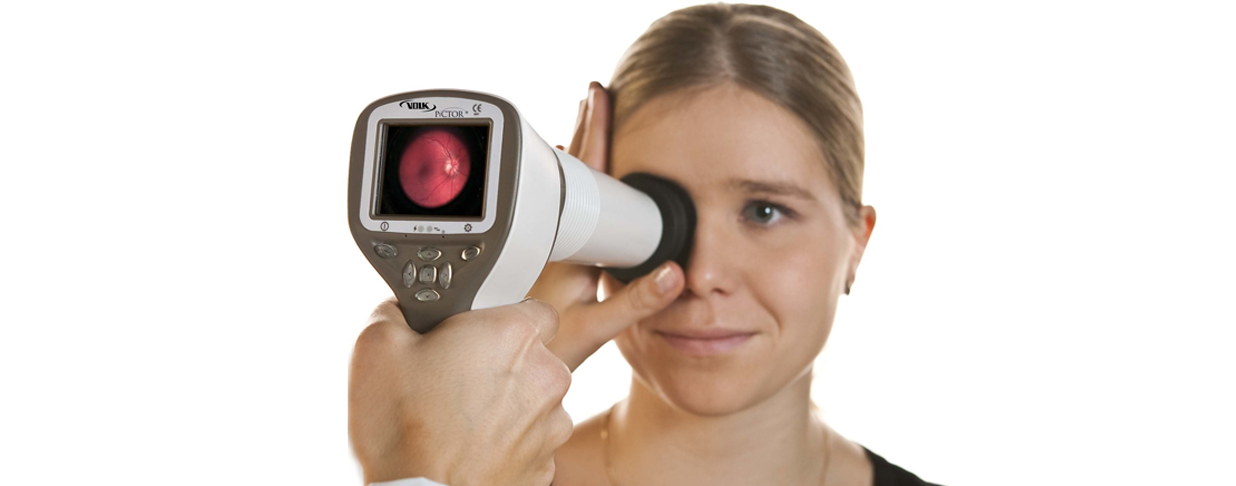Vision problems can develop as early as infancy. And many children remain undiagnosed throughout their early years. In fact, fewer than 15% of preschoolers receive an eye exam by a professional.1 While school screenings are helpful, they provide less than 4% of information that a comprehensive eye exam would give.1 Scheduling a back-to-school eye exam with a doctor of optometry can help ensure the whole family receives comprehensive and thorough vision care.1
Pediatric vision care exams are essential for children’s eye health needs. Early detection and vision correction improves their development and future. Vision care exams can diagnose and address conditions that may not be spotted during routine school screenings.
How often should children get a vision care exam?
Infants need a vision care exam around the age of 6 months old.2 Preschoolers need at least one in-person eye exam between the ages of 3-5 to prevent or diagnose any condition.3 School-aged children, ages 6-18 need an exam before entering first grade and annually after.1
“Parents may not be aware that their child has a vision issue, so it’s important for children to have an annual eye exam with a doctor of optometry. Back-to-school season provides the perfect opportunity to have a child’s ocular health examined allowing for any issues to be uncovered and addressed before they embark on their new school year. Early detection and vision correction improves a child’s development and future.” - Dr. Julie Hively, LensCrafters Optometrist in Chesterfield, MO
Important vision signs to look out for in children
Changes in children’s behavior can be an indicator of a vision problem. Signs a child may have myopia include moving closer to an object to see it better, misidentifying objects or people in the distance and squinting. Signs of hyperopia include difficulty seeing up close, frequently repositioning items nearer and further away, objecting to visual tasks and complaining of headaches.1
In between eye exams, parents can take an active role in monitoring their child's vision. For instance, regularly asking them to describe the way they see objects up close or at a distance (across a room or street). It’s important to remember that children may not realize if their vision is not clear and sharp.
The following signs could indicate a child has vision problems:1,2,3
- Squinting
- Eye pain
- One or both eyes turning in, out, up or down
- Head turn or head tilt
- Frequent headaches
- Inability to copy notes from a blackboard
- Reversals of words or letters
- Frequent rubbing of eyes or tearing
- Eye redness or crusting of eyelids/lashes
- Disinterested in close work, such as coloring or reading
“Eye exams are so important for children because there are often no signs of vision problems and only an eye doctor can pick up on it. - Dr. Tonya Lindsell, LensCrafters Optometrist in Cincinnati, OH
KidsEyes benefit enhancement
When evaluating vision benefits, choose a plan that caters to children’s unique vision needs. With EyeMed’s KidsEyes benefit enhancement, employees have an affordable way to support their children’s vision health. Available for new or existing plans, this optional benefit can put kids on the right track to learn, grow and succeed through healthy eye care habits. For a small additional premium cost, KidsEyes can be offered as an insured benefit with or without a copay.
KidsEyes benefits include:
- Two annual vision care exams*
- Lens exchange if a child’s vision changes within the same benefit year*
- Covered polycarbonate lenses*
- 40% off replacement glasses at any in-network location
- 20% off sports-related eyewear and non-prescription sunglasses at any in-network location
*Applicable copays apply. KidsEyes is not available with all Eye360 benefits.
To learn more about our full range of vision care solutions for children, reach out to your EyeMed representative – or visit eyemed.com.
••••
1 – “School-Aged Vision: 6 to 18 Years of Age;” aoa.org; American Optometry Association; accessed August 11, 2022.
2 – “Infant Vision: Birth to 24 Months of Age;” American Optometry Association; aoa.org; accessed August 11, 2022.
3 – “Preschool Vision: 2 to 5 Years of Age;” American Optometry Association; aoa.org; accessed August 11, 2022.




